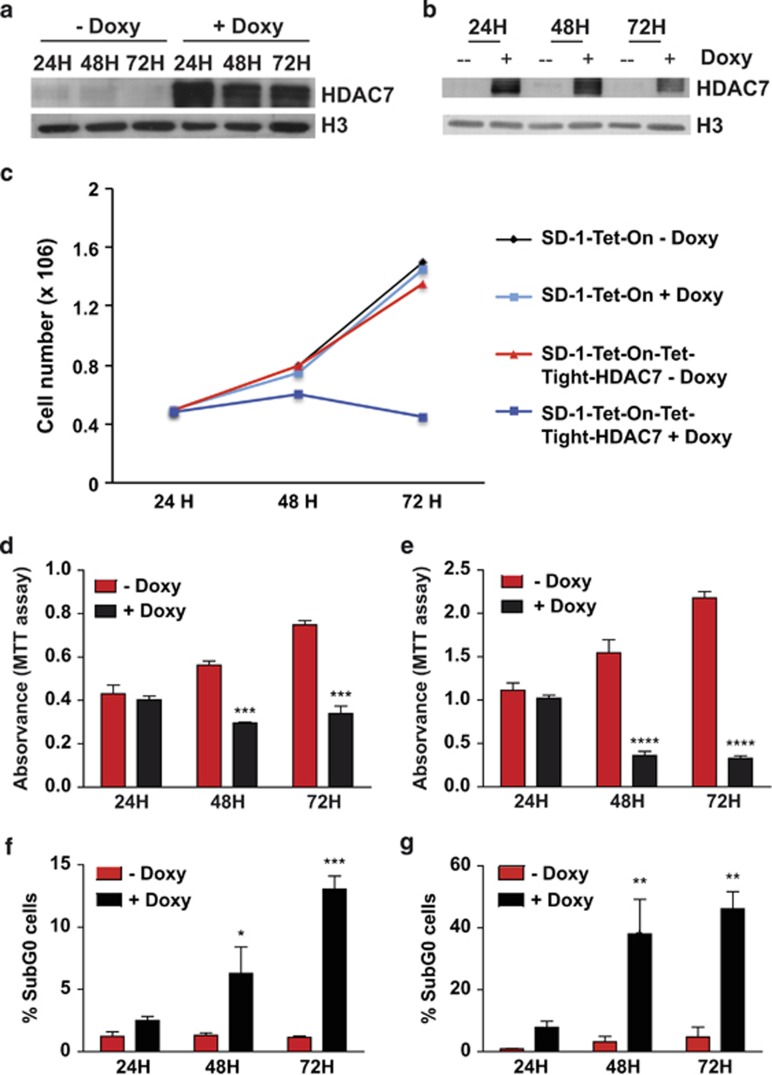Figure 2.
Forced expression of HDAC7 in SD-1 and Namalwa cell lines blocks their proliferation capacity and induces apoptosis. (a) and (b) SD-1 and Namalwa cells were transduced to express HDAC7 in a doxycycline-inducible manner (SD-1-Tet-On-Tight-HDAC7 and Namalwa-Tet-On-Tight-HDAC7 cells). Representative western blots showing HDAC7 protein levels after cell treatment with doxycycline. (c) SD-1-Tet-On and SD-1-Tet-On-Tight-HDAC7 cells were cultured and treated, or not, with doxycycline. At the indicated times after treatment, the cell number was assessed by cell counting. Trypan blue-dyed cells were omitted from the cell counts. Means±S.D. of the four independent experiments performed in triplicate. (d) and (e) Mean±S.E.M. of the absorbance units from five independent MTT assays performed in triplicate, of SD-1-Tet-On-Tight-HDAC7 (left) and Namalwa-Tet-On-Tight-HDAC7 (right) treated, or not, with doxycycline. ***P<0.001; ****P<0.0001. (f) and (g) show the percentage of cells in SubG0 from three independent experiments in SD-1-Tet-On-Tight-HDAC7 (left) and Namalwa-Tet-On-Tight-HDAC7 (right) cells treated, or not, with doxycycline for the indicated times. *P<0.05; **P<0.01; ***P<0.001

